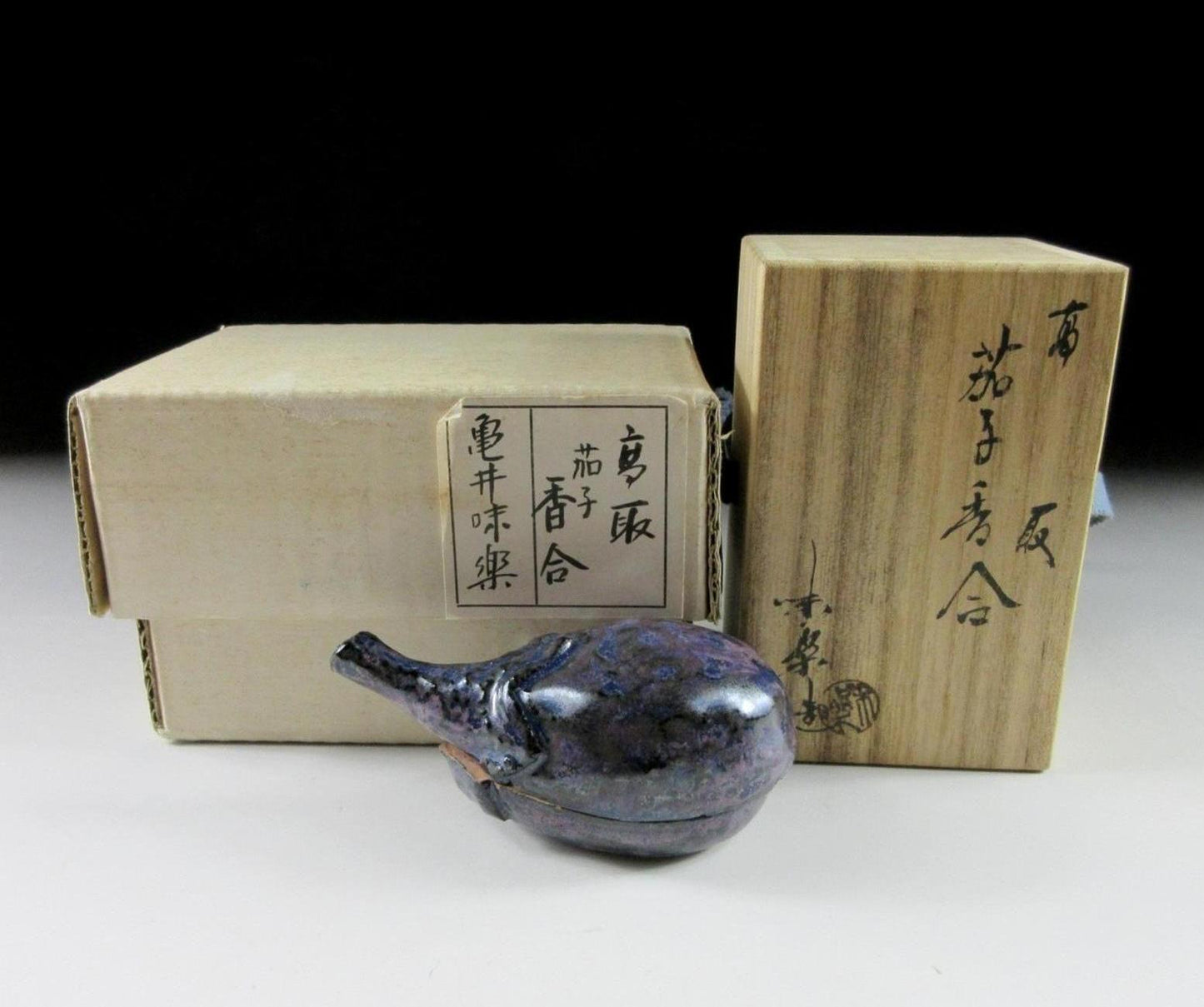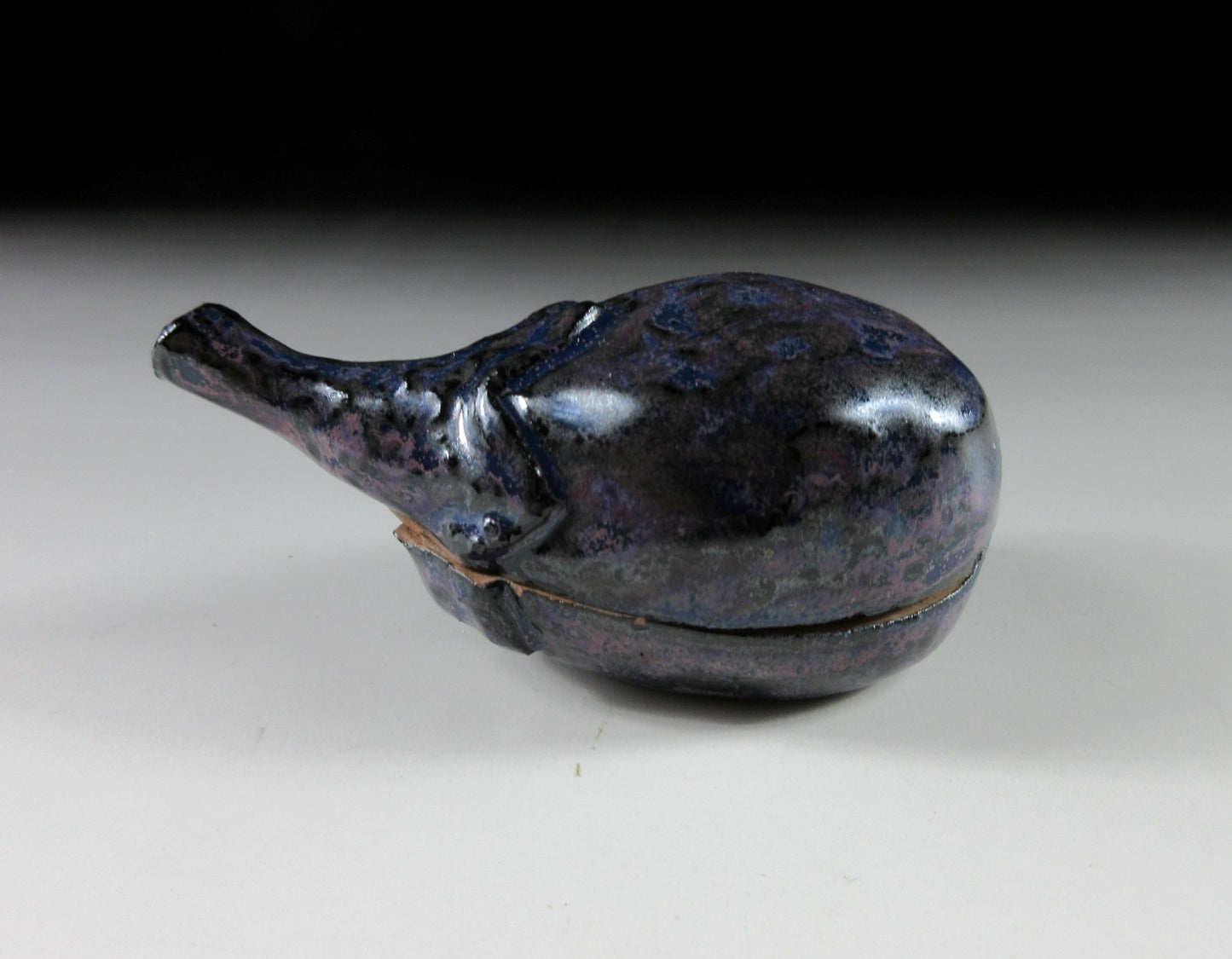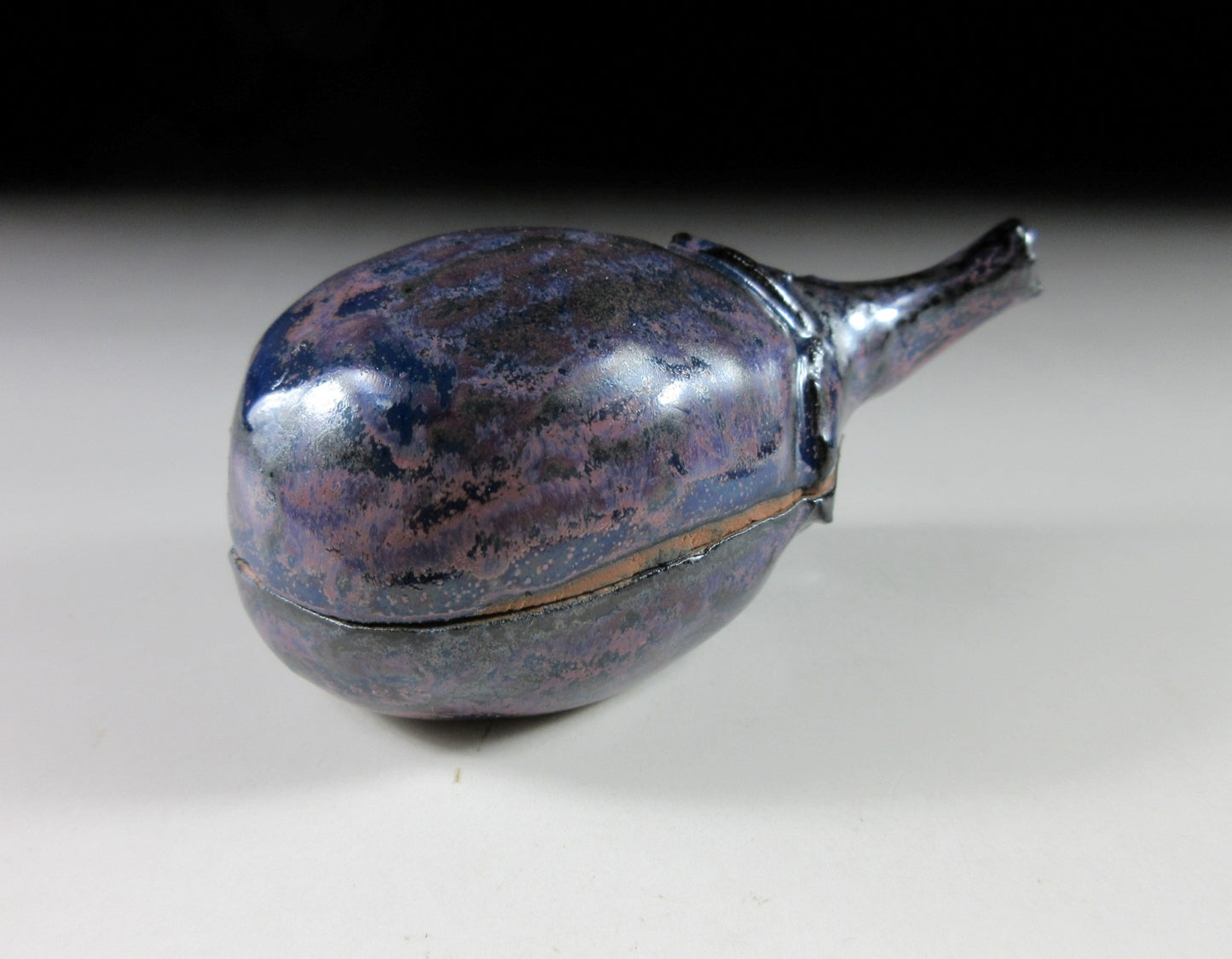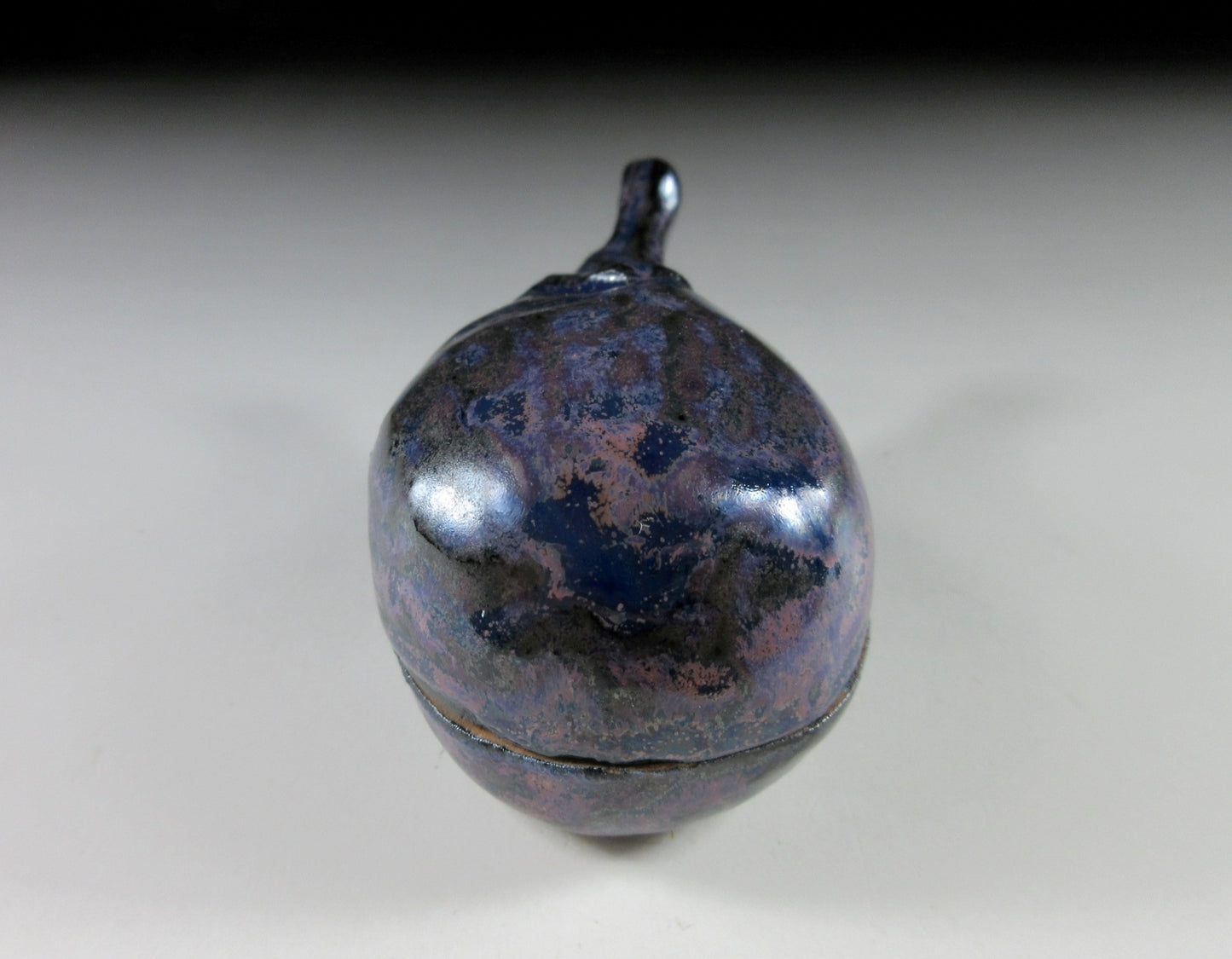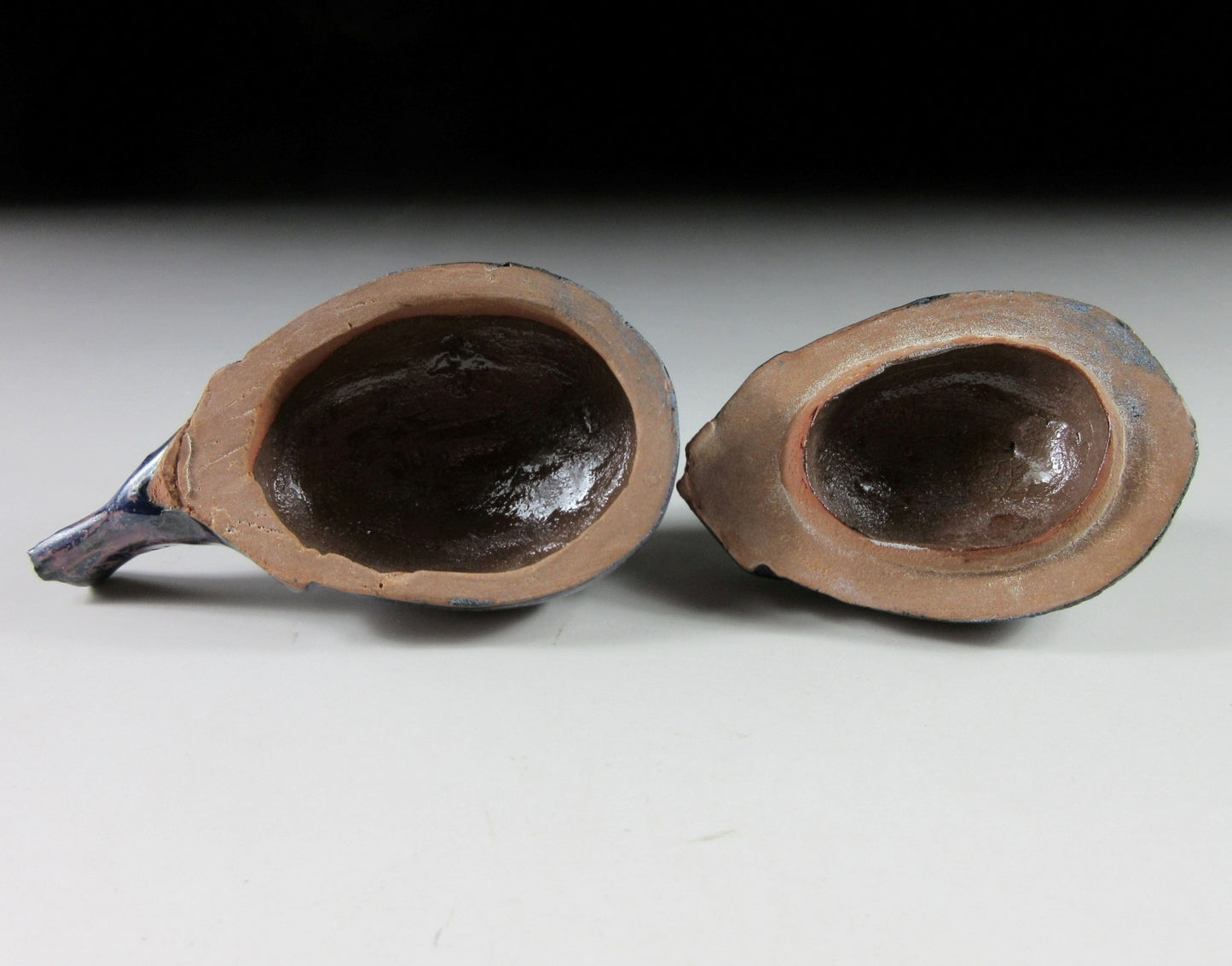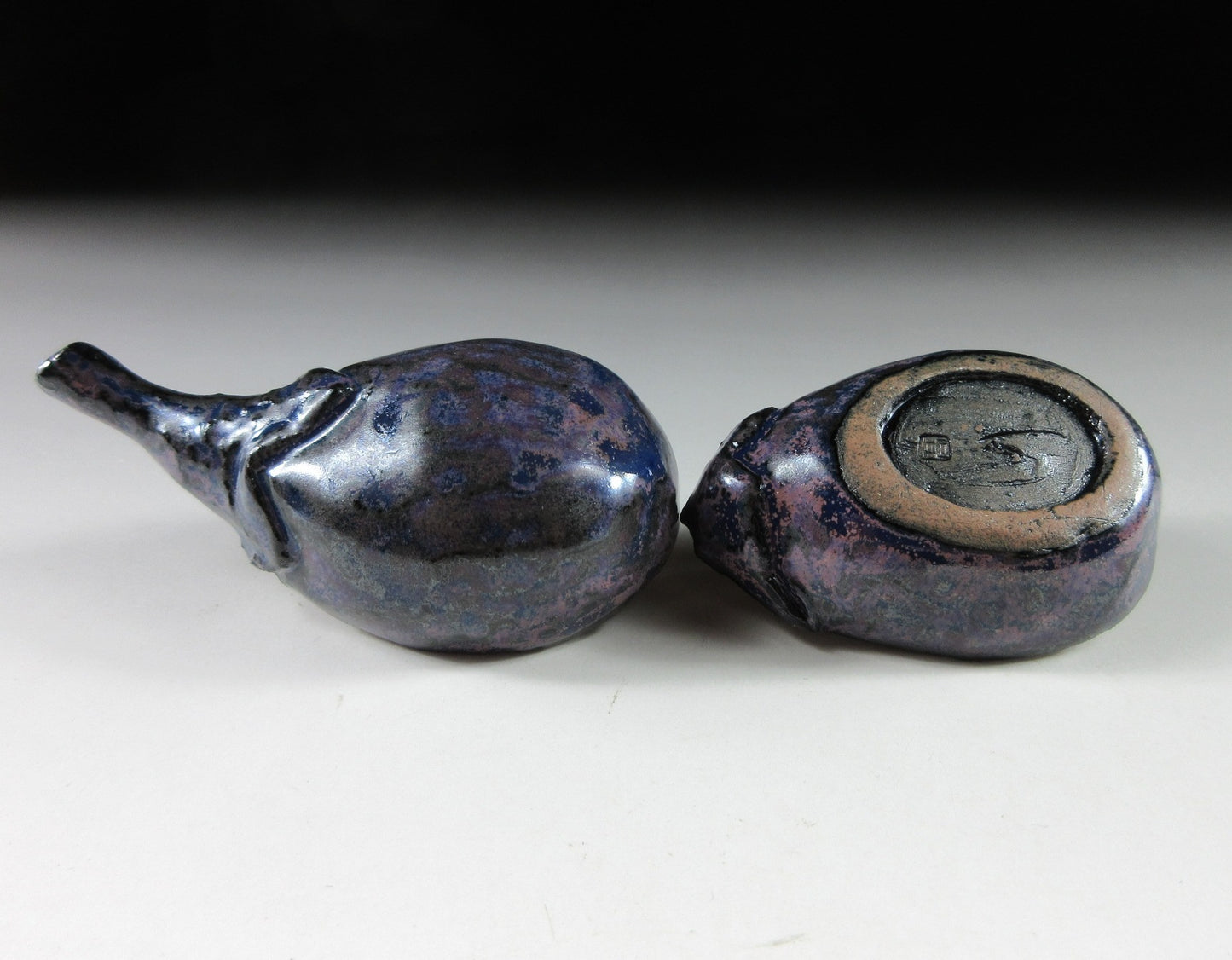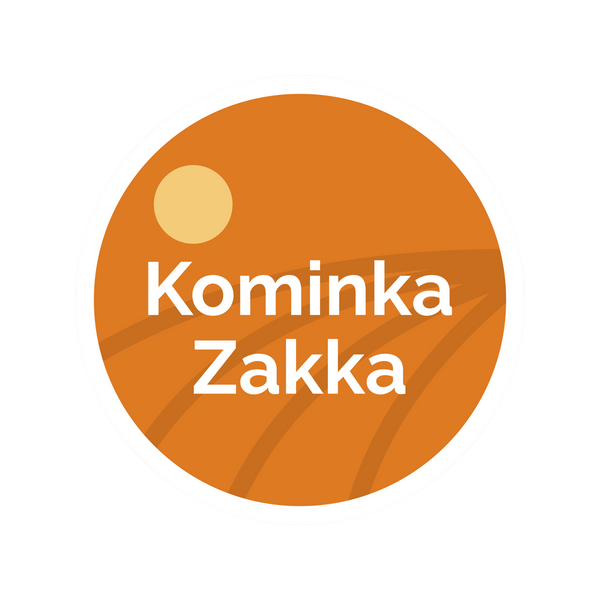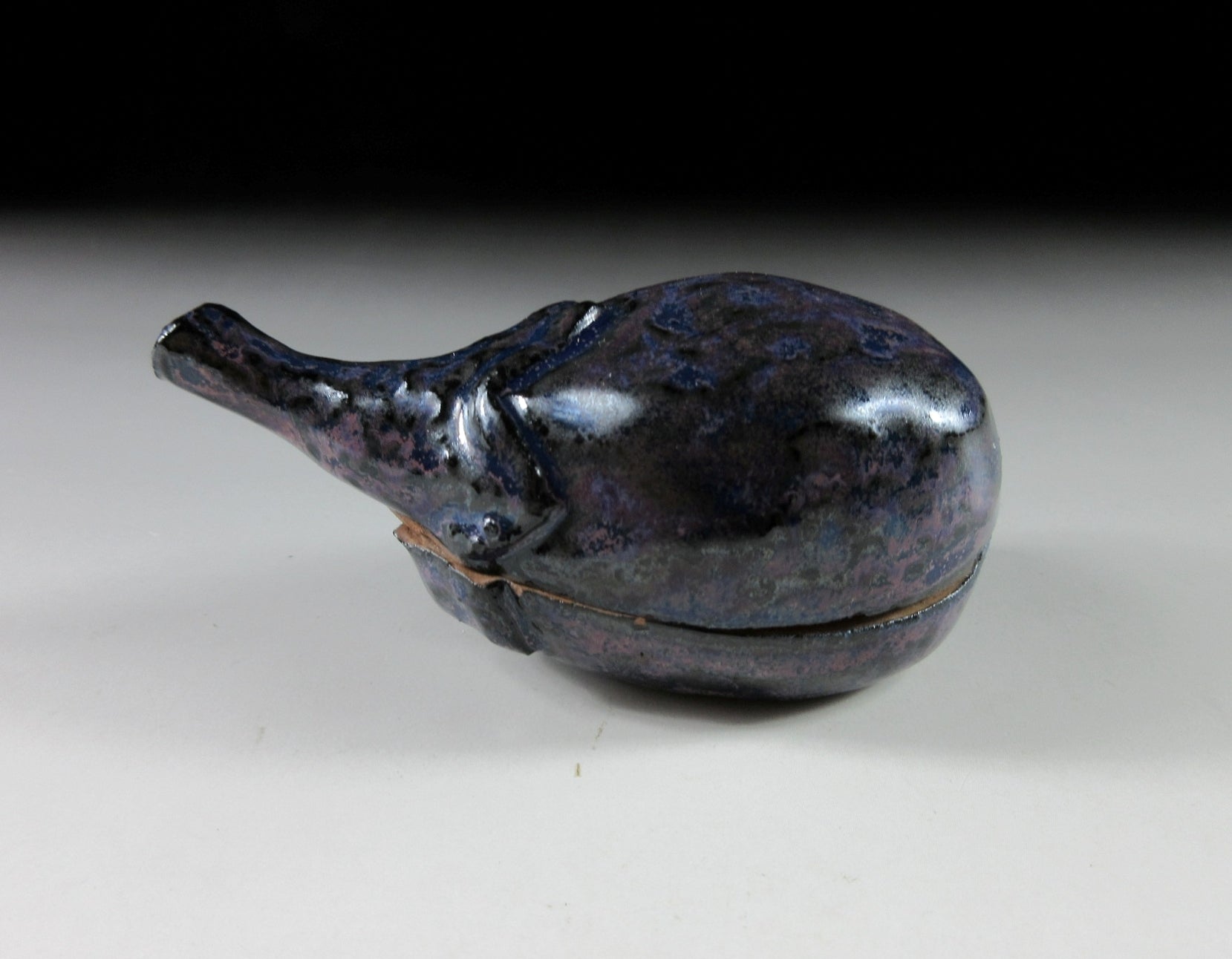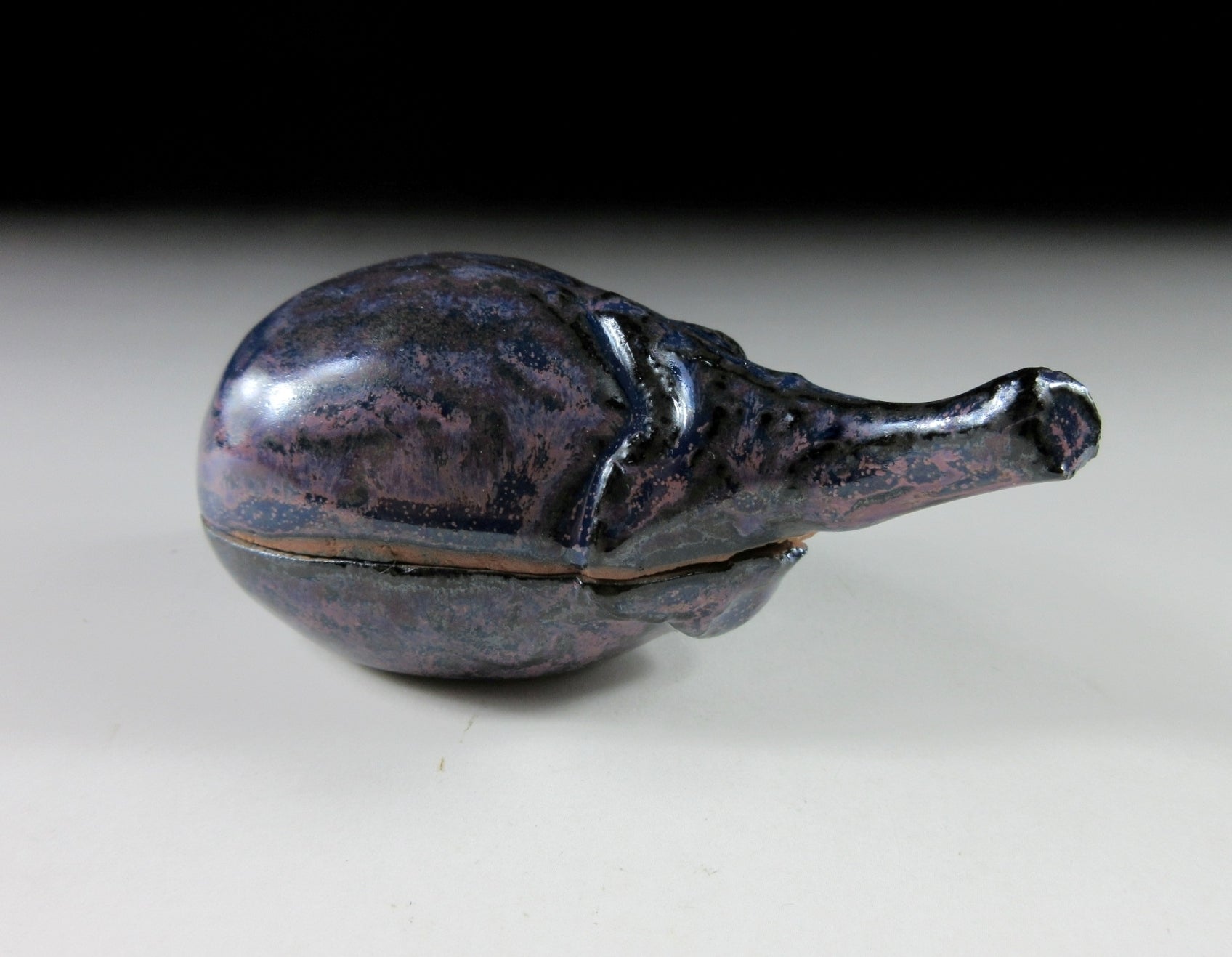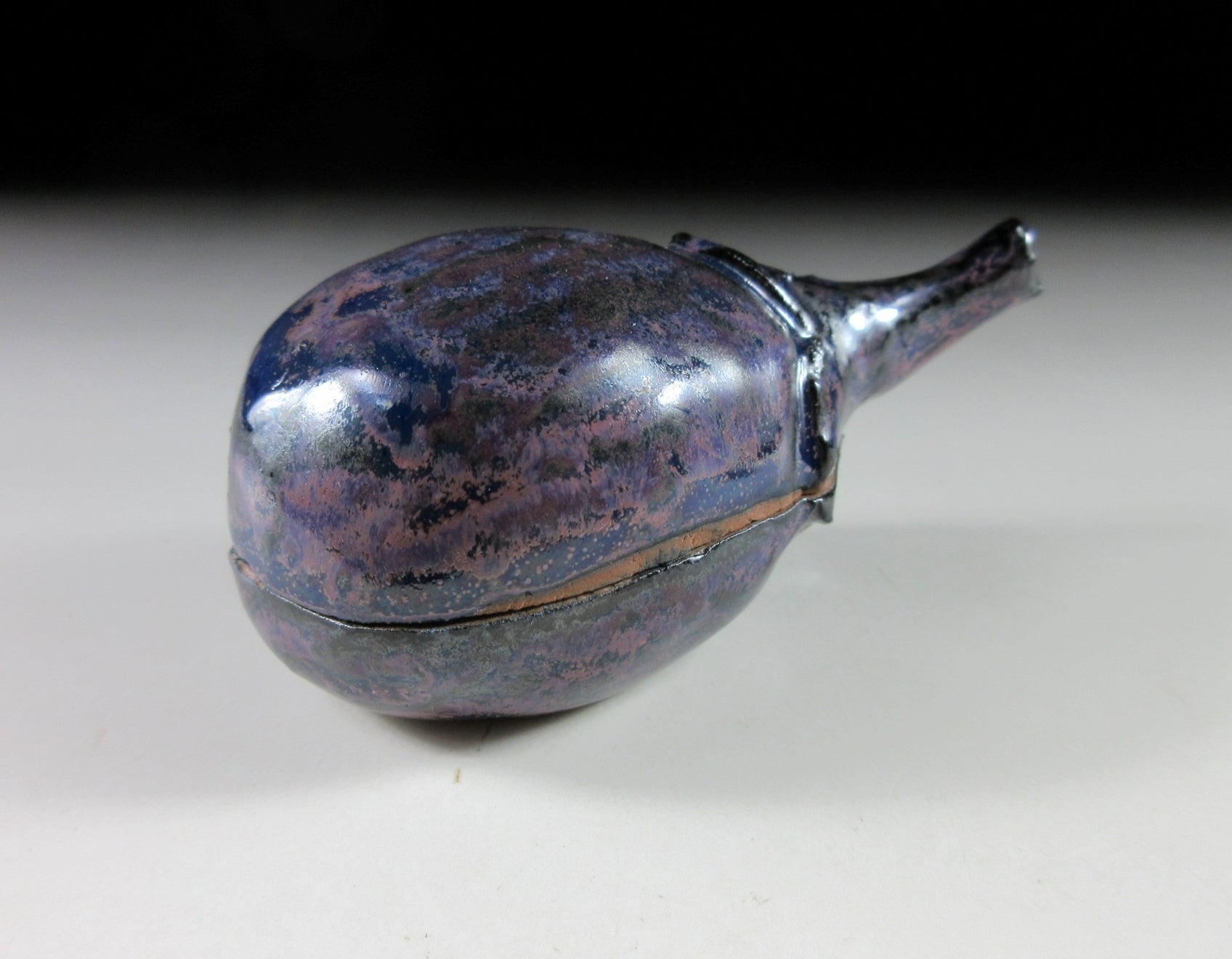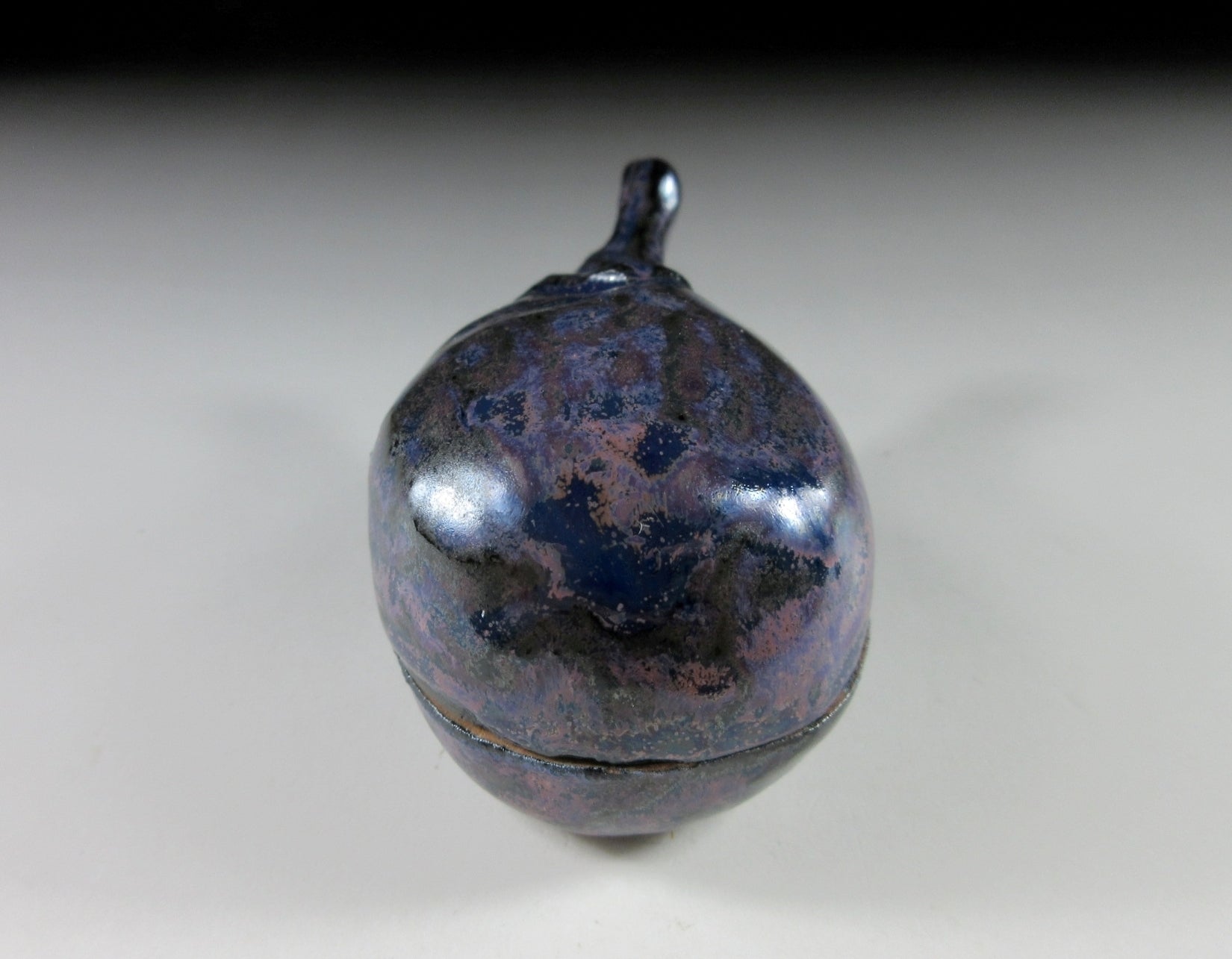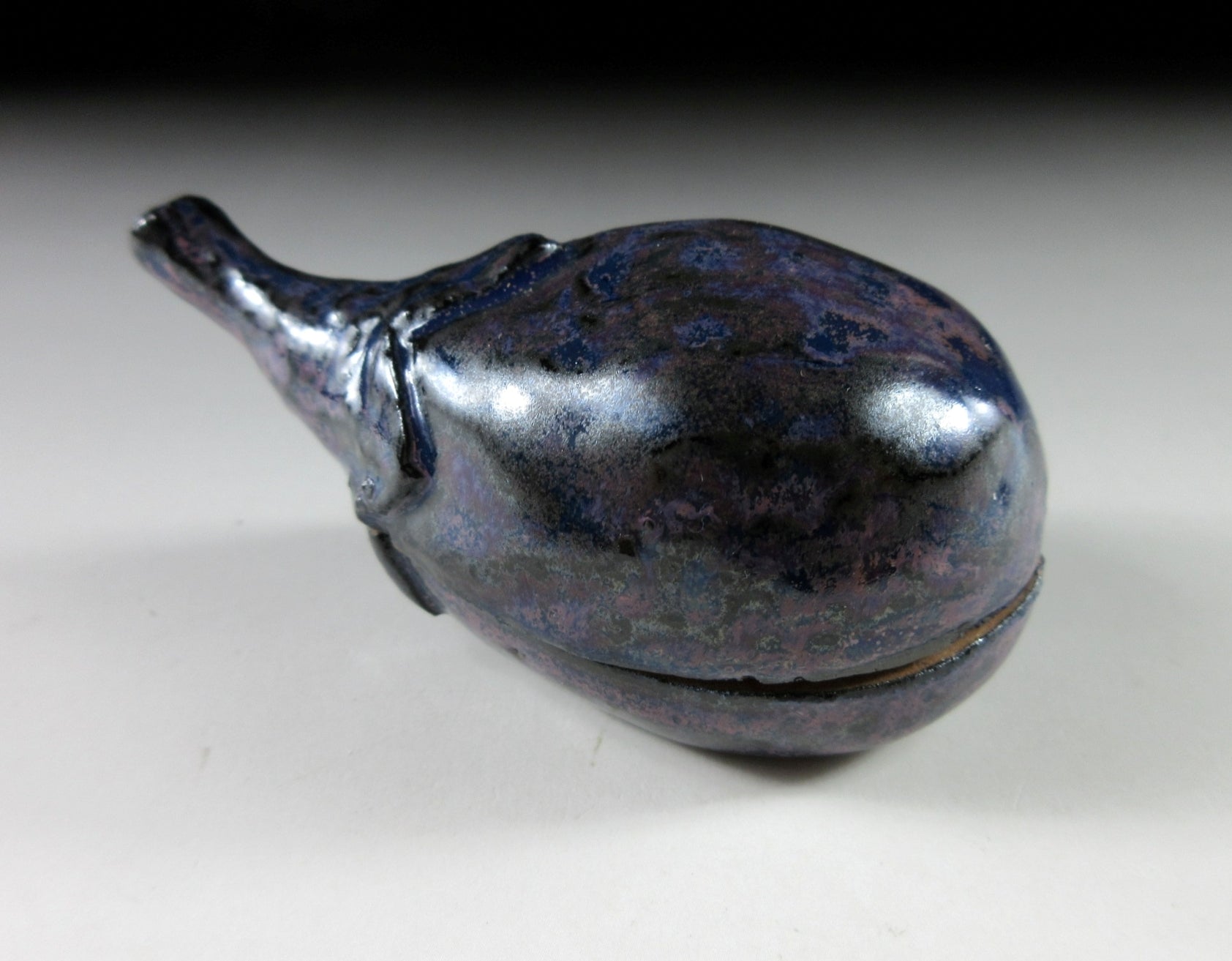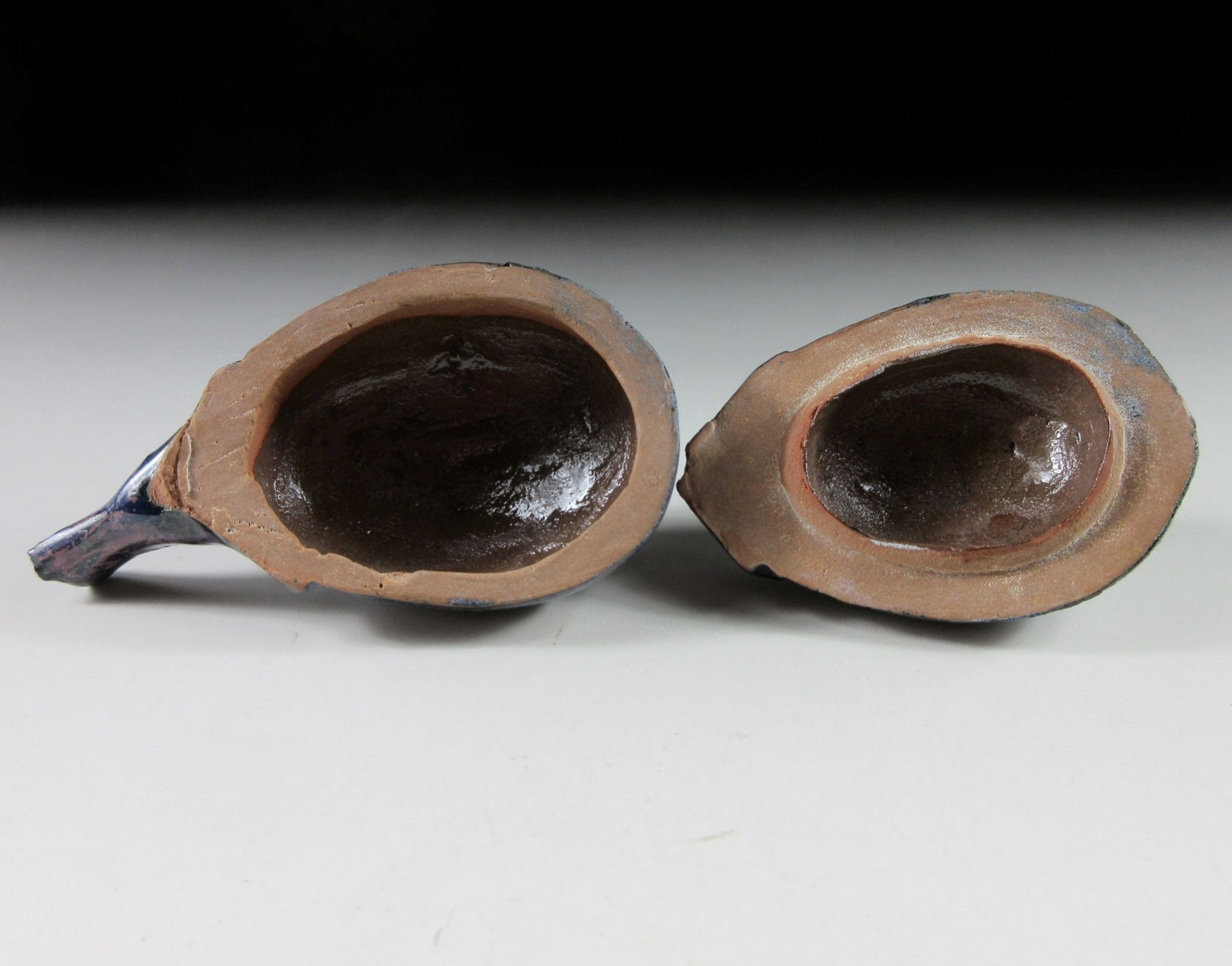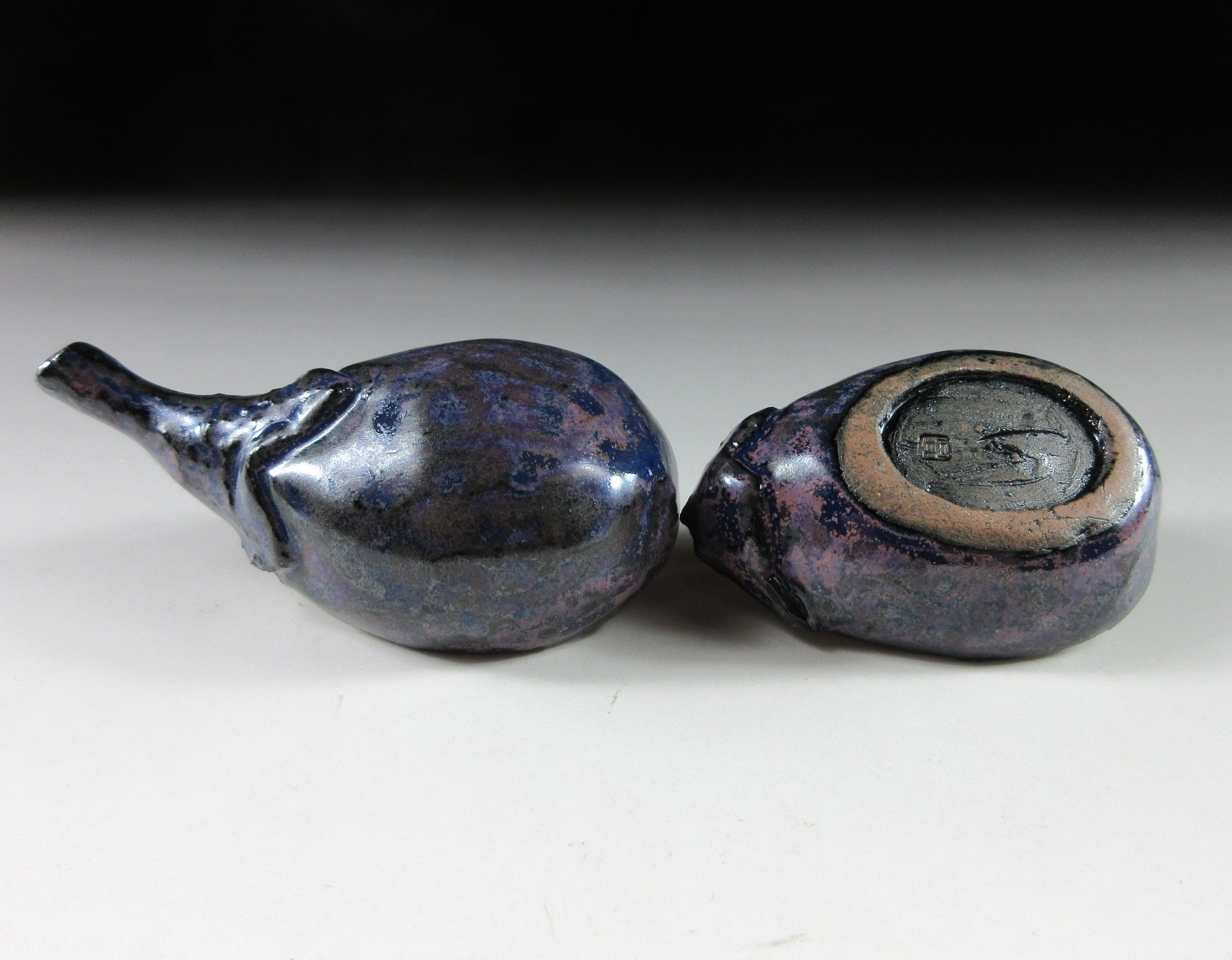Kominka Zakka
Kamei Miraku XIV Takatori-ware Eggplant Kogo
Kamei Miraku XIV Takatori-ware Eggplant Kogo
Couldn't load pickup availability
*SHIPPING OPTIONS VARY DEPENDING ON THE DESTINATION, PLEASE SCROLL TO THE END OF THIS LISTING FOR MORE DETAILS.
This listing is for a splendid iron glaze Takatori-ware kogo made around 20 years ago by distinguished potter, Kamei Miraku XIV. It is made of high-fired stoneware and moulded to resemble an eggplant. The beloved eggplant holds special meaning in Japan, it is seen as particularly good luck if your first dream in the New Year includes Mt. Fuji, a hawk, and an eggplant. Also eggplants also happen to be one of Japan’s more popular summer vegetables, and this is because they are believed to have a cooling effect on the body. Its size and shape is suitable for holding both woodchip and kneaded incense, although pottery kogo are typically used for kneaded incense during the cooler months. The stamp of the potter can be found on the bottom, and it comes with its original signed wooden storage box. It also comes with an outer paper box to protect the tomobako.
Kamei Miraku XIV (1931-2014) was a Takatori-ware potter and fourteenth generation master of the Miraku family kiln. He was born in Fukuoka as the eldest son of Miraku XIII, and began studying under his father from a young age. In 1964 his father passed away and he assumed the title of Miraku XIV, and in 1977 he became certified as an Intangible Cultural Property of Fukuoka city. In 1988 he received the International Arts and Culture Award, and 1992 he received the Fukuoka Prefecture Skilled Craftsperson Achievement Award. In 1999 he was given the title of Contemporary Skilled Craftsperson, an honour bestowed upon him by the Japanese government. His son, Miraku XV, took over the family kiln in 2001. **Fellow sellers, this information was researched by Kominka Zakka and CANNOT be used in your own listings.
Takatori-ware refers to pottery produced in Fukuoka, Kyushu. The first Takatori potters were of Korean descent, and production was heavily controlled by the local feudal lords. Takatori-ware gets its name from the location of the first kiln, Takuma Gama, built at the base of Mt. Takatori. Takatori-ware uses a variety of glazes ranging from blue, green, and various shades of brown. It is generally wheel-thrown and made using high-fired stoneware clay.
Kogo are for holding incense during the tea ceremony. Kogo vary depending on the season. In summer wooden kogo are used for holding chips of incense wood, and in winter ceramic kogo are used for holding kneaded incense intended for the hearth. During the tea ceremony, incense is added to the charcoal fire during the charcoal-laying procedure.
Sizes
Paper Box: H.7.7cm (3”) x 12.1cm (4.7”) x 8.5cm (3.3”)
Box: H.6.1cm (2.4”) x 10cm (3.9”) x 6.3cm (2.4”)
Kogo: H.3.4cm (1.3”) x L.8.6cm (3.3”) x W.4.2cm (1.6”)
Condition
It’s in very good condition with no chips or cracks.
THESE ARE SHIPPING ESTIMATES BASED ON THE CURRENT GLOBAL SITUATION
**Germany, France, Greece, Spain, Poland, Austria, Slovakia, Lithuania, Slovenia: NO SHIPPING. Very strict and expensive packaging laws in place and we are not licensed to send products to these countries. We have no plan to register at this time because the process is in some cases very expensive and complicated, plus each country has its own set of regulations and application process.
**USA, UK, Canada, Australia, New Zealand, Switzerland, Norway: Airmail ePacket (approx. 15-28 days). Combined shipping available up to 2kgs for Airmail ePacket (please send us a message).
**Asia: Airmail ePacket (approx. 15-21 days). Combined shipping available up to 2kgs for Airmail ePacket (please send us a message).
**Central Asia, Middle East, South Africa, Brazil, Mexico: EMS Express 10-15 days.
**Russia: No shipping methods available.
Share
